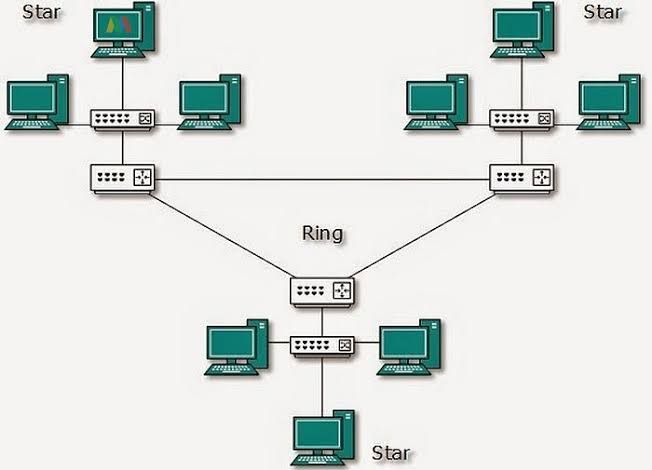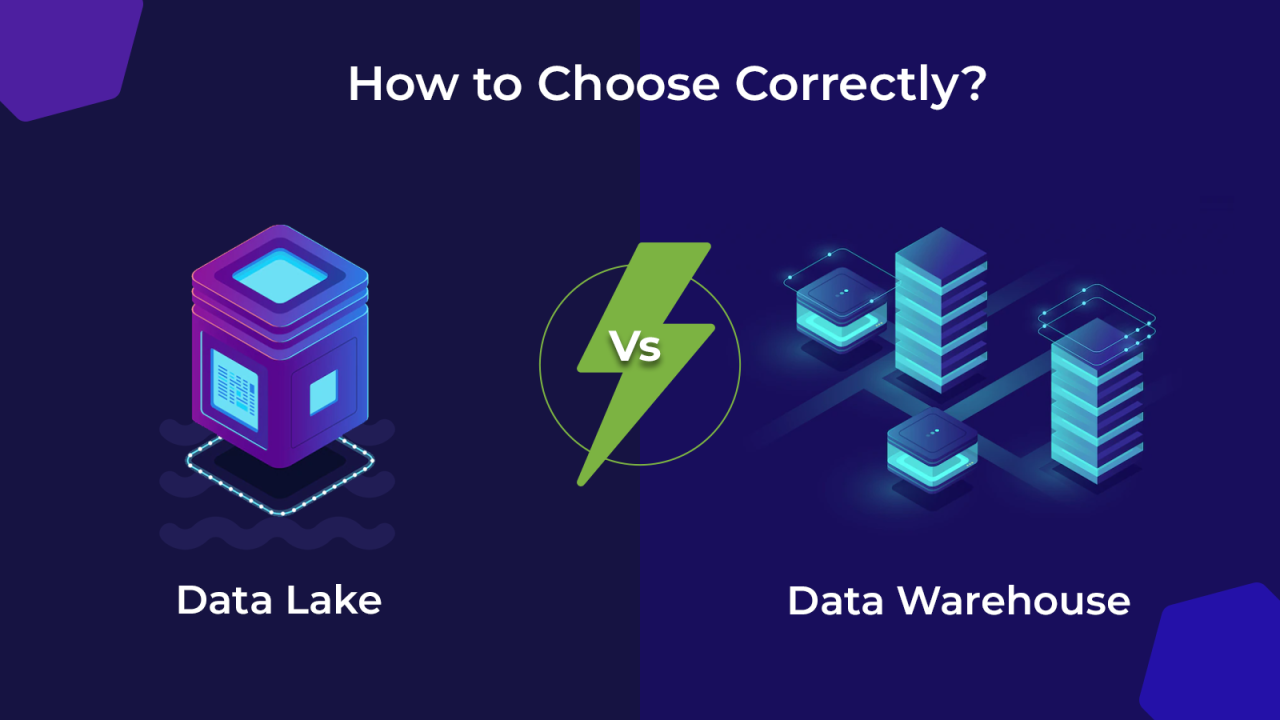In today’s complex digital landscape, the notion of a purely on-premise or an exclusively public cloud infrastructure is increasingly becoming a relic of the past. Modern enterprises, grappling with diverse workloads, stringent regulatory requirements, and the imperative for both agility and control, are overwhelmingly embracing Hybrid IT. This sophisticated architectural strategy involves seamlessly integrating on-premise infrastructure, private cloud environments, and public cloud services into a unified, cohesive operational entity. It’s a pragmatic approach that allows organizations to leverage the best attributes of each environment, optimizing for performance, security, cost, and compliance. Hybrid IT is not merely a technical configuration; it’s a strategic bridge that enables unparalleled flexibility, unlocks new opportunities for innovation, and allows businesses to adapt rapidly to an ever-changing technological and economic climate, effectively bridging networks for a truly integrated future.
Understanding the Landscape: Why Hybrid IT is Essential
To truly grasp the significance and complexities of Hybrid IT, it’s crucial to understand the driving forces that have led businesses away from singular infrastructure models towards this integrated approach.
A. The Enduring Value of On-Premise Infrastructure
Despite the undeniable allure of the public cloud, traditional on-premise infrastructure continues to hold significant value for specific workloads and industries.
- Data Residency and Compliance: For highly regulated industries (e.g., finance, healthcare, government), strict data residency laws and compliance mandates often necessitate keeping sensitive data on-premise or within a private cloud where physical control is absolute.
- Legacy Systems and Workloads: Many older, mission-critical applications were not designed for the cloud and are expensive, complex, or risky to migrate. Keeping these legacy systems on-premise, while gradually modernizing, is often the only practical solution.
- Low Latency Requirements: Workloads requiring extremely low latency (e.g., real-time manufacturing control systems, high-frequency trading) often perform better when physically close to the data source or end-users, which on-premise setups can provide.
- Security for Highly Sensitive Data: While public clouds offer robust security, some organizations prefer the perceived additional security and control of dedicated, on-premise hardware for their most sensitive and proprietary data.
- Cost for Predictable, High-Volume Workloads: For highly predictable, consistently high-volume workloads, the long-term cost of running dedicated on-premise infrastructure can sometimes be more cost-effective than continuous public cloud consumption, especially if hardware is already amortized.
B. The Irresistible Force of Public Cloud Benefits
The rapid adoption of public cloud services (e.g., AWS, Azure, Google Cloud) is driven by compelling advantages that traditional on-premise environments struggle to match.
- Unmatched Scalability and Elasticity: Public clouds offer virtually limitless compute, storage, and networking resources that can be provisioned and de-provisioned on demand. This elasticity allows businesses to scale rapidly to meet fluctuating demands, avoiding expensive over-provisioning for peak loads.
- Cost Efficiency (OpEx Model): The public cloud operates on an operational expenditure (OpEx) model, where users pay only for the resources they consume. This eliminates large upfront capital expenditures (CapEx) for hardware, making it financially attractive for startups and businesses with variable workloads.
- Global Reach and Low Latency: Public cloud providers have data centers distributed globally, allowing businesses to deploy applications closer to their international customers, reducing latency and improving user experience worldwide.
- Rapid Innovation and Managed Services: Cloud providers offer a vast ecosystem of managed services (e.g., managed databases, serverless functions, AI/ML platforms) that allow developers to build and deploy applications faster without managing underlying infrastructure. This accelerates innovation.
- Enhanced Reliability and Redundancy: Cloud providers invest massively in redundant infrastructure, distributed across multiple availability zones and regions, offering built-in high availability and disaster recovery capabilities that are difficult and costly to replicate on-premise.
C. The Emergence of Private Cloud
Caught between the two, many large enterprises developed their own private cloud environments, often using virtualization and orchestration software (like OpenStack or VMware) to mimic public cloud agility within their own data centers.
- Cloud-Like Agility, On-Premise Control: Private clouds aim to provide the self-service, elasticity, and automation benefits of public cloud within a dedicated, organization-owned infrastructure.
- Addressing Specific Needs: Ideal for highly sensitive workloads, specific regulatory requirements, or legacy applications that require tight integration with on-premise systems but still benefit from cloud-like operational models.
- Challenges: Building and maintaining a private cloud requires significant investment in hardware, software, and specialized expertise, making it a viable option primarily for large enterprises.
The realization that no single environment is optimal for all workloads led to the imperative for Hybrid IT – a strategic blend that aims to harness the strengths of each.
Defining Hybrid IT: Seamless Integration and Orchestration
At its core, Hybrid IT is about creating a unified, extensible, and intelligently orchestrated environment that spans disparate infrastructure locations. It’s more than just having assets in multiple places; it’s about making them work together as a single, coherent system.
A. The Components of a Hybrid IT Architecture
A typical Hybrid IT architecture comprises a seamless integration of these environments:
- On-Premise Data Center: Traditional physical servers, storage, and networking equipment managed directly by the organization. This forms the foundation for legacy applications and highly sensitive data.
- Private Cloud: A virtualized, cloud-like environment built within the organization’s own data center or hosted by a third-party dedicated provider. Offers agility with control.
- Public Cloud(s): Services from hyperscale providers like AWS, Microsoft Azure, or Google Cloud. Used for scalable applications, new development, and burst capacity.
- Edge Locations: Increasingly, remote compute and storage at the ‘edge’ of the network (e.g., IoT devices, remote offices) are also integrated into the hybrid strategy for low-latency processing.
B. The ‘Bridging’ Mechanisms: Enabling Seamless Connectivity
The “bridging networks” aspect of Hybrid IT is crucial. It involves establishing robust, secure, and high-performance connectivity and management across these disparate environments.
- Network Connectivity:
- VPNs (Virtual Private Networks): Encrypted tunnels over the public internet for secure, cost-effective connectivity between on-premise and public cloud. Suitable for less latency-sensitive traffic.
- Direct Connect / Dedicated Links: Private, high-bandwidth, low-latency connections (e.g., AWS Direct Connect, Azure ExpressRoute, Google Cloud Interconnect) that bypass the public internet, offering superior performance and security for critical workloads.
- SD-WAN (Software-Defined Wide Area Network): Optimizes traffic routing across multiple connections, providing better performance and resilience for distributed hybrid environments.
- Identity and Access Management (IAM): A unified identity management system (e.g., leveraging Active Directory with cloud integrations like Azure AD, Okta, Ping Identity) that ensures consistent user authentication and authorization across all environments, simplifying security and administration.
- Unified Management and Orchestration:
- Hybrid Cloud Management Platforms: Tools and platforms that provide a single pane of glass for monitoring, managing, and automating resources across on-premise, private, and public clouds (e.g., VMware Cloud, Google Anthos, Azure Arc, IBM Cloud Satellite).
- Container Orchestration (Kubernetes): A powerful technology that allows applications packaged as containers to run consistently across any environment, making them highly portable in a hybrid setup.
- Infrastructure as Code (IaC): Defining infrastructure and configurations in code (e.g., Terraform, Ansible) ensures consistent deployments and management across all parts of the hybrid landscape.
- Data Management and Migration: Strategies for secure and efficient data transfer, synchronization, and replication between on-premise and cloud environments. This includes data lakes spanning multiple locations, data warehousing, and backup/disaster recovery solutions.
C. Workload Placement Strategy: The Right Environment for the Right Job
A key aspect of Hybrid IT is making intelligent decisions about workload placement. This involves strategically deploying applications and data in the environment that best meets their specific requirements.
- Sensitivity/Compliance: Highly sensitive data or applications subject to strict regulations reside on-premise or in private clouds.
- Scalability/Elasticity: Workloads with fluctuating demand or burst capacity needs are ideal for the public cloud.
- Performance/Latency: Applications requiring ultra-low latency might stay on-premise or leverage edge computing.
- Cost Optimization: Placing workloads where they are most cost-effective—public cloud for variable loads, on-premise for stable, high-volume workloads.
- Legacy Integration: Applications tightly coupled with on-premise legacy systems remain there, while new components might be developed in the cloud.
This strategic placement ensures optimal performance, cost efficiency, and compliance across the entire IT estate.
Compelling Advantages of Adopting Hybrid IT
The strategic adoption of Hybrid IT offers a powerful blend of benefits that address many of the limitations inherent in purely singular infrastructure models, propelling organizations towards greater agility and operational excellence.
A. Optimal Flexibility and Strategic Agility
Hybrid IT provides unparalleled flexibility and strategic agility, allowing organizations to adapt swiftly to changing business needs and market conditions.
- Workload Portability: The ability to move applications and data between on-premise, private, and public cloud environments gives organizations significant control over where their workloads run, enabling optimization based on real-time factors like cost, performance, or regulatory changes.
- Vendor Diversification: Reduces reliance on a single cloud provider, mitigating vendor lock-in risks and allowing organizations to leverage best-of-breed services from multiple vendors. This fosters competitive pricing and access to specialized features.
- Rapid Experimentation and Innovation: New applications or experimental projects can be rapidly spun up in the public cloud, leveraging its vast resources, without impacting stable on-premise production systems. Successful experiments can then be scaled or integrated into the hybrid fabric.
- Gradual Cloud Adoption: For organizations with significant legacy investments, Hybrid IT allows for a phased, less disruptive transition to the cloud, enabling modernization at a manageable pace without a ‘big bang’ migration.
B. Enhanced Cost Optimization and Efficiency
By strategically placing workloads, Hybrid IT can lead to significant cost optimization.
- ‘Bursting’ to the Cloud: Organizations can keep predictable, baseline workloads on-premise (where they might be more cost-effective in the long run) and ‘burst’ to the public cloud for peak demand, paying only for the extra capacity when needed.
- Right Environment for Right Workload: Prevents over-provisioning on-premise for fluctuating needs and avoids overpaying for static, predictable workloads in the public cloud.
- Resource Utilization: Optimizes the use of existing on-premise investments while leveraging the elasticity of the cloud for variable demand, leading to more efficient overall resource utilization.
- Reduced Capital Expenditure (CapEx): New projects or expansion can primarily leverage public cloud resources, reducing the need for large upfront hardware purchases and shifting costs to an operational expenditure (OpEx) model.
C. Robust Security and Compliance Adherence
Hybrid IT offers a sophisticated approach to meeting stringent security and compliance requirements.
- Data Residency and Control: Organizations can keep highly sensitive data on-premise or in a private cloud to meet strict data residency laws and maintain absolute physical control, while leveraging public cloud for less sensitive workloads.
- Granular Security Policies: Implement consistent security policies and identity management across all environments, ensuring uniform access controls and risk posture.
- Compliance Flexibility: Allows organizations to choose the environment that best meets the compliance requirements for specific data types or workloads, rather than forcing all workloads into a single, potentially non-compliant, location.
- Enhanced Threat Detection: Integrating security monitoring across hybrid environments provides a holistic view of potential threats, enabling more comprehensive and rapid incident response.
D. Improved Resilience and Business Continuity
A well-designed Hybrid IT strategy inherently builds greater resilience into the overall IT infrastructure.
- Disaster Recovery (DR) Capabilities: Public cloud can serve as a highly cost-effective and scalable disaster recovery site for on-premise workloads. In the event of an on-premise disaster, operations can quickly failover to the cloud.
- Geographical Redundancy: By spanning across on-premise data centers and multiple cloud regions, Hybrid IT provides geographical redundancy, protecting against regional outages or disasters.
- Avoidance of Single Point of Failure: Distributing workloads across diverse environments reduces the risk associated with a single point of failure that might impact a purely on-premise or single-cloud setup.
- Mitigating Vendor Lock-in: The ability to leverage multiple cloud providers, or move between on-premise and public cloud, reduces the risk associated with a single vendor’s service disruption or policy change.
E. Modernization and Legacy Integration
Hybrid IT provides a practical pathway for organizations to modernize their IT landscape without wholesale disruption.
- API Integration: Building APIs that connect legacy on-premise applications with modern cloud-native services enables incremental modernization without a full rewrite.
- Data Modernization: Leveraging cloud data lakes and analytics platforms to process and gain insights from data that originates from on-premise systems.
- DevOps Enablement: Provides the flexibility for development teams to adopt DevOps practices and cloud-native tools for new applications, while maintaining support for existing systems.
Key Challenges and Complexities in Implementing Hybrid IT
Despite its compelling advantages, adopting and managing a Hybrid IT environment introduces a new set of complexities and challenges that organizations must proactively address.
A. Network Latency and Bandwidth Management
Bridging disparate environments inherently involves network communication, which can introduce latency and bandwidth challenges.
- Latency Sensitive Workloads: Applications requiring ultra-low latency (e.g., real-time processing, inter-service communication in distributed microservices) can suffer performance degradation if traffic must traverse long distances between on-premise and cloud.
- Bandwidth Costs: Transferring large volumes of data between on-premise and public cloud (especially egress, or data leaving the cloud) can incur significant and often unexpected costs.
- Complex Network Design: Designing, configuring, and managing consistent network connectivity, IP addressing, and routing across multiple, diverse environments (on-premise firewalls, cloud VPCs, VPNs, direct links) is highly complex and requires specialized expertise.
B. Data Management and Synchronization
Managing data consistently and securely across hybrid environments is one of the most significant hurdles.
- Data Consistency: Ensuring data consistency and integrity across distributed databases and storage systems (both on-premise and cloud) can be challenging, particularly for transactional workloads.
- Data Migration: Migrating large datasets between on-premise and cloud, or between different cloud providers, can be time-consuming, complex, and require specialized tools.
- Data Governance and Security: Implementing consistent data governance policies, access controls, encryption, and compliance across varied data storage locations (e.g., different types of databases, object storage) adds complexity.
- Shadow IT: Without clear governance, departments might independently deploy cloud services, leading to unmanaged data sprawl and security risks outside of the hybrid framework.
C. Unified Management and Orchestration Tools
While the promise of a single pane of glass exists, achieving true unified management and orchestration across diverse hybrid environments remains a significant challenge.
- Tool Sprawl: Organizations often end up using multiple management tools—one for on-premise, one for each public cloud, and perhaps another for containers—leading to increased operational complexity and a fragmented view of the IT estate.
- Skill Gap: Operators and administrators need expertise across various technologies and platforms (e.g., VMware, Kubernetes, AWS, Azure, Google Cloud), creating a significant skill gap within IT teams.
- Process Integration: Integrating operational processes (e.g., incident management, change management, backup/restore) across hybrid environments requires careful planning and robust automation.
D. Security and Compliance Across Diverse Environments
Maintaining a consistent and robust security posture and compliance framework across a hybrid environment is inherently complex.
- Security Policy Consistency: Ensuring that security policies, firewall rules, and access controls are uniformly applied and enforced across on-premise networks, private clouds, and multiple public cloud accounts.
- Threat Vector Expansion: The larger and more diverse the attack surface, the more complex threat detection and incident response become.
- Regulatory Nuances: Different cloud providers and on-premise setups may have varying compliance certifications and capabilities, requiring careful mapping to specific regulatory requirements.
- Visibility Gaps: Gaining comprehensive security visibility and auditing capabilities across heterogeneous environments can be challenging, potentially leading to blind spots.
E. Cost Management and Optimization Complexity
While Hybrid IT offers cost optimization potential, managing costs across diverse billing models can be incredibly complex.
- Billing Complexity: Public cloud billing can be granular and dynamic, making it difficult to predict and optimize costs. Integrating these costs with fixed on-premise expenditures for a holistic view is challenging.
- Egress Fees: Data transfer costs (especially egress fees for data leaving the public cloud) can be a significant and unexpected expense if not properly managed.
- Resource Sprawl: Without proper governance and automation, resources can be left running unnecessarily in the cloud, leading to ‘cloud waste.’
- Right-Sizing Across Environments: Continually optimizing workload placement and resource sizing across different environments to achieve the best cost/performance balance is an ongoing and complex task.
Best Practices for Successful Hybrid IT Implementation
To effectively navigate the complexities and unlock the full potential of Hybrid IT, organizations should adopt a strategic, phased, and disciplined approach, focusing on governance, automation, and people.
A. Define a Clear Hybrid IT Strategy and Governance Model
Start with a well-defined Hybrid IT strategy aligned with business objectives. Determine which workloads are best suited for which environment based on factors like security, compliance, performance, cost, and existing dependencies. Establish a robust governance model that includes:
- Policy Frameworks: Clear policies for security, data residency, resource provisioning, and cost management across all environments.
- Decision Matrix: A structured approach for evaluating and placing workloads (e.g., a “cloud suitability” checklist).
- Roles and Responsibilities: Clearly define roles for cloud architects, operations teams, and security teams in a hybrid context.
B. Standardize with Infrastructure as Code (IaC) and Automation
Automation is non-negotiable for managing Hybrid IT complexity.
- Infrastructure as Code (IaC): Use tools like Terraform, Ansible, or Pulumi to define and provision infrastructure consistently across on-premise, private cloud, and public cloud environments. This ensures reproducibility, reduces manual errors, and speeds up deployments.
- Automated CI/CD Pipelines: Implement Continuous Integration/Continuous Delivery (CI/CD) pipelines that can deploy applications and infrastructure changes reliably to any part of the hybrid environment.
- Runbook Automation: Automate common operational tasks, incident response, and self-healing mechanisms across the hybrid infrastructure to improve efficiency and resilience.
C. Centralize Identity and Access Management (IAM)
A unified Identity and Access Management (IAM) system is critical for security and simplified administration.
- Single Sign-On (SSO): Implement SSO across all hybrid components for seamless user experience and centralized control.
- Directory Integration: Integrate on-premise directories (e.g., Active Directory) with cloud IAM services (e.g., Azure AD Connect, AWS SSO) to ensure consistent user identities and permissions.
- Least Privilege Principle: Apply the principle of least privilege, granting users and services only the minimum necessary permissions across all environments.
D. Implement Robust Hybrid Network Connectivity
Invest in high-performance, secure, and resilient network connectivity between your on-premise and cloud environments.
- Dedicated Links: Utilize direct connect services (e.g., AWS Direct Connect, Azure ExpressRoute) for mission-critical workloads requiring low latency and high throughput.
- SD-WAN: Implement SD-WAN solutions to intelligently route traffic, optimize performance, and enhance the resilience of your hybrid network, particularly for distributed offices or edge locations.
- Consistent IP Addressing: Plan a coherent IP addressing scheme that spans your hybrid environment to simplify routing and network management.
E. Prioritize Data Governance and Management
Develop a comprehensive data governance strategy for your hybrid environment.
- Data Classification: Classify data based on sensitivity, regulatory requirements, and access patterns to inform placement decisions.
- Data Movement Strategy: Plan for efficient and secure data migration, replication, and synchronization between environments, considering bandwidth, latency, and egress costs.
- Data Security: Implement consistent data encryption (at rest and in transit), data loss prevention (DLP), and robust backup/recovery solutions across all data storage locations.
- Unified Data Platform: Explore hybrid data platforms that can seamlessly manage and analyze data spanning multiple environments (e.g., hybrid databases, data lakes that span on-premise and cloud).
F. Standardize with Containerization (Kubernetes)
Containerization (e.g., Docker) and Kubernetes are powerful enablers for Hybrid IT, providing consistent application deployment across any environment.
- Application Portability: Packaging applications in containers ensures they run uniformly whether on-premise, in a private cloud, or across different public clouds, significantly simplifying workload migration.
- Unified Orchestration: Kubernetes (or managed Kubernetes services like EKS, AKS, GKE) provides a single control plane for deploying, scaling, and managing containerized applications across the entire hybrid fabric.
- Reduced Configuration Drift: Containers encapsulate dependencies, reducing the likelihood of ‘works on my machine’ issues and making deployments more reliable across diverse infrastructure.
G. Foster a Collaborative DevOps Culture
Hybrid IT success hinges on breaking down traditional silos between development, operations, and security teams.
- Cross-Functional Teams: Encourage collaboration and shared ownership of infrastructure and applications across all environments.
- Shared Tools and Processes: Implement common tools, metrics, and processes for monitoring, incident management, and change management across the hybrid landscape.
- Skill Development: Invest in training programs to upskill teams in cloud technologies, automation tools, and the complexities of distributed systems management.
H. Implement Robust Observability and Cost Management
You can’t manage what you can’t see or measure.
- Unified Monitoring: Deploy comprehensive monitoring, logging, and tracing tools that provide a single pane of glass view across all hybrid environments (e.g., leveraging Prometheus/Grafana, ELK Stack, or cloud-agnostic observability platforms).
- Performance Baseline and Metrics: Establish performance baselines for critical applications and continuously monitor key metrics to identify bottlenecks or performance degradation regardless of workload location.
- FinOps Practices: Adopt FinOps principles to manage and optimize cloud spending in the hybrid context. This involves continuous cost monitoring, forecasting, and a collaborative effort between finance, operations, and development to make cost-aware decisions.
The Future Trajectory of Hybrid IT: Smarter, More Integrated, More Adaptive
The concept of Hybrid IT is not static; it’s continuously evolving, driven by advancements in cloud-native technologies, artificial intelligence, and the ever-growing demand for seamless, intelligent operations.
A. Multi-Cloud as a Natural Extension
As organizations gain confidence in managing hybrid environments, the trend towards multi-cloud strategies will naturally accelerate. This involves leveraging services from multiple public cloud providers (e.g., using AWS for one type of workload, Azure for another) in addition to on-premise infrastructure, driven by:
- Best-of-Breed Services: Accessing specialized services unique to specific providers.
- Geographical Reach: Expanding global footprint to regions served better by certain providers.
- Risk Mitigation: Further reducing vendor lock-in and increasing resilience against provider-specific outages.
- Regulatory Compliance: Meeting specific regional data residency or compliance requirements of different providers.
B. AI-Driven Hybrid Operations and AIOps
Artificial Intelligence and Machine Learning will increasingly be applied to automate and optimize the management of complex Hybrid IT environments.
- Predictive Analytics for Operations: AI will analyze vast amounts of operational data (logs, metrics, traces) to predict potential outages, identify performance bottlenecks, and recommend proactive remediation, moving towards AIOps.
- Automated Anomaly Detection: AI will automatically detect unusual patterns or security threats across the hybrid infrastructure, providing faster and more accurate alerts.
- Intelligent Workload Placement: AI algorithms will dynamically optimize workload placement across the hybrid environment based on real-time factors like cost, latency, resource availability, and compliance requirements.
- Self-Healing Infrastructure: Automated systems will leverage AI to not only detect but also diagnose and autonomously resolve common issues across the hybrid landscape.
C. Pervasive Edge Computing Integration
The ‘edge’ will become an even more integral part of the Hybrid IT fabric.
- Edge as a First-Class Citizen: Managing edge devices and compute resources (e.g., IoT gateways, smart factories, retail stores) as seamlessly as traditional data centers and public cloud regions.
- Distributed Data Processing: Shifting more data processing and AI inference closer to the data source at the edge to reduce latency, conserve bandwidth, and enable real-time decision-making in highly distributed scenarios (e.g., autonomous vehicles, smart city sensors).
- Hybrid Edge Management Platforms: Tools that extend cloud management and orchestration capabilities (e.g., Kubernetes at the edge, serverless functions at edge locations) to unify the entire compute spectrum.
D. Enhanced Security Frameworks for Distributed Environments
Security will become even more sophisticated and integrated across the hybrid fabric.
- Zero-Trust Architectures: Widespread adoption of Zero-Trust principles, assuming no implicit trust, and requiring strict verification for every user, device, and application attempting to access resources across hybrid boundaries.
- Cloud-Native Security Tools: Leveraging cloud-native security services (e.g., WAFs, DDoS protection, advanced threat detection) and extending them to on-premise environments.
- Security as Code: Defining security policies and configurations in code (e.g., using Open Policy Agent – OPA) and enforcing them automatically across the hybrid environment.
- Confidential Computing: Technologies that encrypt data while it’s in use, even in public cloud environments, providing an extra layer of security for highly sensitive workloads in a hybrid setup.
E. FinOps and Cloud Financial Management Maturity
The discipline of FinOps will become even more central to Hybrid IT operations.
- Advanced Cost Allocation: More sophisticated tagging and cost allocation strategies to accurately attribute costs across various hybrid components and business units.
- Predictive Cost Optimization: AI-driven tools that predict future cloud spending, identify cost anomalies, and recommend optimization actions across the hybrid portfolio.
- Automated Cost Governance: Implementing automated policies (e.g., automatically shutting down unused resources, recommending right-sizing) to ensure adherence to budget and cost efficiency targets across the entire hybrid estate.
Conclusion
In the dynamic arena of modern enterprise IT, Hybrid IT has emerged as the indispensable strategy, effectively bridging networks and connecting disparate computing environments into a unified whole. It represents a pragmatic and powerful response to the complex demands of today’s businesses, balancing the unique strengths of on-premise infrastructure (for control, compliance, and legacy systems) with the unparalleled agility, scalability, and innovation offered by public cloud services.
This intricate dance of integration, enabled by robust network connectivity, unified management platforms, and containerization technologies, unlocks a cascade of benefits: optimal flexibility, significant cost efficiencies, enhanced security, and superior business resilience. While the journey to a fully optimized Hybrid IT environment is fraught with challenges—from managing network latency and data consistency to navigating tool sprawl and ensuring comprehensive security—adherence to best practices is paramount. Strategic planning, automation through Infrastructure as Code, centralized identity management, a strong focus on data governance, and the cultivation of a collaborative DevOps culture are crucial for success.
Looking ahead, the future of Hybrid IT is one of increasing sophistication, driven by AI-powered operations, seamless multi-cloud integration, the pervasive inclusion of edge computing, and ever-evolving security paradigms. Hybrid IT is not just a passing trend; it is the enduring blueprint for navigating the complexities of the digital age, empowering organizations to adapt, innovate, and grow with unmatched agility and control, truly bridging networks for an interconnected and thriving future.














